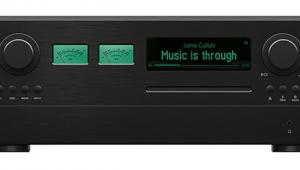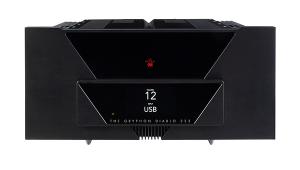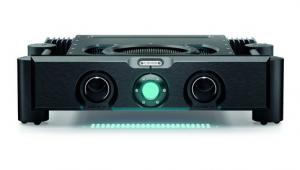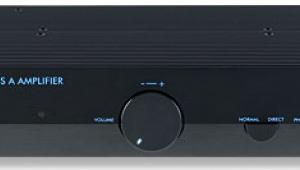T+A PA 1100 E Integrated Amp/DAC

 As T+A's midrange E series is reinforced by a new amplifier, based on the PA 1000 E but equipped with BT and a USB DAC, we ask 'is this now the stereotype for modern amps?'
As T+A's midrange E series is reinforced by a new amplifier, based on the PA 1000 E but equipped with BT and a USB DAC, we ask 'is this now the stereotype for modern amps?'
As the latest in a long line of amplifiers from the German brand, T+A's PA 1100 E integrated is also one of the more innovative and comprehensive in its scope. The company (T+A stands for 'Theory and Application') has been manufacturing audio equipment since 1978 and prides itself on both its deep technical capability and in-house manufacturing. However, despite this heritage, the PA 1100 E is only the first of its amplifiers to include an onboard DAC – something very many competing brands have been doing for years.
So if you are looking for a single-box solution capable of servicing a mix of analogue and digital sources, or if you simply want to reduce your box count, and have previously admired T+A from afar, then this £3660 amplifier might well prove the perfect solution. In practice, the PA 1100 E is a development of the PA 1000 E [HFN Mar '17] – it features the same Class D amplification stages but trades one of the latter's balanced inputs for a TI PCM1795-based DAC board.
Focus On Features
Available in satin silver and black finishes, the PA 1100 E also shares the same casework with its supremely understated industrial design, exceptional build and finish quality. As an ambassador for Westphalia, T+A proves that 'Made in Germany' still stands for something!
Rated at 2x140W/8ohm, this is a two-channel amp offering four single-ended line inputs, one of which can be configured for vinyl replay by specifying T+A's optional MM/MC phono module, a balanced XLR input and tape loop. Two coaxial and two optical inputs take digital sources up to 192kHz/24-bit, alongside a USB-B input for connection to a PC (up to 384kHz/32-bit and DSD256).

Wireless Bluetooth is also offered along with a row of three HDMI sockets – a £390 option – two of which are suitable for connection to a Blu-ray player or TV/satellite box while the third, an output, carries video and audio (via ARC) back out to your flatscreen display. Note that the T+A PA 1100 E is a two-channel amplifier, so multichannel Dolby/DTS decoding is not included in its feature set.
Ranged along the front panel from left to right are a power/standby switch and a row of five input buttons. Each of the input selection buttons switches between several sources by repeated presses. For example, a single press of the input 1 button selects Phono input 1 and a multicolour LED above lights in red for analogue. Press that button again and the USB input is selected for playback from a computer source and the indicator LED above turns blue.
This basic idea extends to all five input selector buttons, some of which handle up to four digital/analogue sources, variously denoted by a sequence of four different LED colours. A little puzzling at first, these multifunction controls certainly 'de-clutter' the fascia without compromising its broad flexibility. After a short and typically feverish burst of button pressing, you quickly get the hang of things...
Filter Tips
There are also ancillary features such as a tape record monitor and a selector for switching between speakers and headphones. Another button when briefly pressed turns the bass and treble controls on or off while a longer press switches the loudness function on or off. Finally, the button labelled 'OVS' switches between just two of the four digital filter options typically incorporated on T+A's costlier offerings [HFN Oct '19]. The default is a fairly standard linear phase FIR filter with a steep roll-off and the other is T+A's familiar Bezier-style IIR filter. The latter offers reduced time-domain distortion at the expense of an early treble roll-off and poor alias rejection – it's best used with 96kHz (and higher) digital inputs.
Meanwhile, three flush buttons for bass, treble and balance pop out when pushed, the volume rotary is motorised for IR remote control, and there's also a separate 1⁄4in headphone socket for 'personal' listening. Unusually, the IR commands are not picked-up by an 'eye' in the amplifier's fascia, as is typical, but are snagged by a separate IR receiver that's plugged into the rear of the amplifier.
![]() Striking It Rich
Striking It Rich
The PA 1100 E was used in my reference system of Naim NDX network streamer and NAC82/NAP250 amps driving ATC SCM40 loudspeakers. Its USB input was tested by connecting it to a PC streaming hi-res files from my network server using foobar2000.
From the beginning it was clear that the PA 1100 E is a smooth, warm and rich-sounding amplifier, no matter the source used. Vocals, in particular, sounded well rounded and lifelike while recordings that are inclined to harshness were rendered more pleasurable and involving than when heard on less-forgiving rivals. Of particular note was its handling of lower registers, with bass guitars and plucked double-basses sounding well extended, even if this was at the expense of some articulation at times.

























































